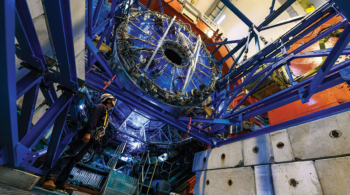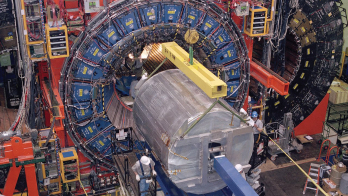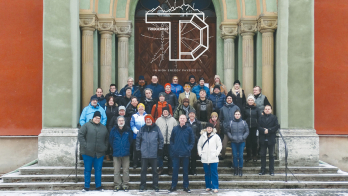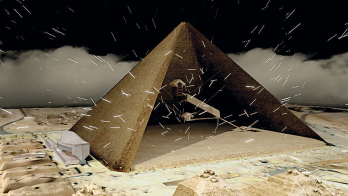The ALICE experiment has reached another milestone with the successful installation of the first two supermodules of the electromagnetic calorimeter (EMCal).
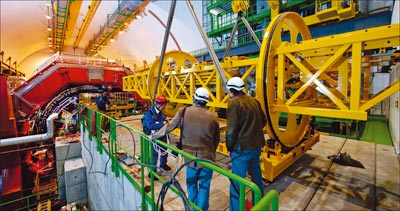
ALICE is designed to study matter produced in high-energy nuclear collisions at the LHC, in particular using lead ions. The goal is to investigate thoroughly the characteristics of hot, dense matter as it is thought to have existed in the early universe. Experiments at RHIC at Brookhaven have shown that an important way to probe the matter formed in heavy-ion collisions is to study its effect on high-energy partons (quarks and gluons) produced early in the collision. As the partons propagate through the resulting “fireball” their energy loss depends on the density and interaction strength of the matter they encounter. The high-energy partons become observable as jets of hadrons when they hadronize and the energy loss becomes evident through the decreased energy of the products that emerge from the fragmentation process.
Although the ALICE experiment has excellent momentum-measurement and identification capabilities for charged hadrons, it previously lacked a large-acceptance electromagnetic calorimeter to measure the neutral energy component of jets. The EMCal, a lead-scintillator sampling calorimeter with “Shashlik”-style optical-fibre read-out, will provide ALICE with this capability. It consists of identical modules each comprising four independent read-out towers of 6 cm × 6 cm. Twelve modules attached to a back-plate form one strip-module, and 24 strip-modules inserted into a crate comprise one EMCal supermodule with a weight of about 8 t.
The EMCal is a late addition to ALICE, arriving in effect as a first upgrade. Indeed, the full approval (with construction) funds didn’t occur until early 2008. The calorimeter covers about one-third of the acceptance of the central part of ALICE, where it must fit within the existing structure by means of a novel independent support structure – between the magnet coil and the layer of time-of-flight counters. Installation of the 8 t supermodules requires a system of rails with a sophisticated insertion device to bridge across to the support structure. The full EMCal will consist of 10 full supermodules and two partial supermodules.


